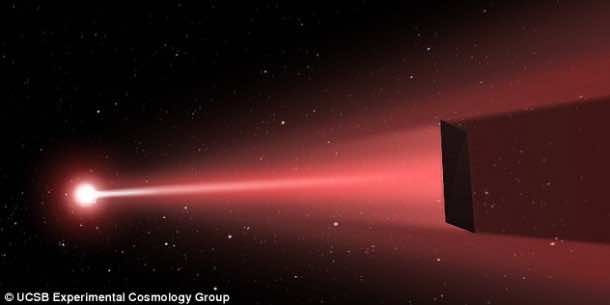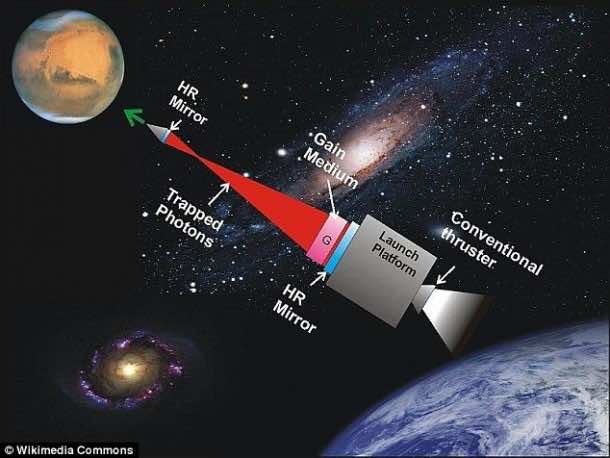Phillip Lubin, a physicist who talked about how a probe could make its way to Mars in only three days has stated that the time can be reduced to only 30 minutes by making use of highly powerful lasers for propelling a wafer-thin unmanned spacecraft.


Phillip Lubin is a UC Santa Barbara physics professor and talked about his ‘direct energy propulsion’ concept for the first time last October at the NASA Innovative Advanced Concepts (NICAC) symposium. He has come up with a detailed paper comprised of 52 pages in the Journal of the British Interplanetary Society.
He claims that if laser is fired at a spacecraft, it would be able to accelerate without the presence of friction. This will render it capable of achieving speeds in excess of a quarter of speed of light in mere minutes. He said, “As an example, on the eventual upper end, a full-scale (50-70 GW) DE-STAR 4 – Directed Energy System for Targeting of Asteroids and Exploration – will propel a wafer scale spacecraft with a one meter sail to about 26 percent the speed of light in about 10 minutes. [It would] reach Mars (1 AU) in 30 minutes, pass Voyager 1 in less than 3 days, pass 1,000 AU in 12 days and reach Alpha Centauri in about 15 years.” This implies that the craft would be travelling at a speed of about 174.3 million miles per hour.
There are, of course, a number of problems with this approach. The first one being that how would you slow down such a fast moving object once it reaches Mars? The other issue being the space junk that is flying around in space. The next issue being that of time dilation.
Lubin, however, remains faithful to his concept and states that this approach is for unmanned crafts. Lubin along with his team from the University of California Santa Barbara is working on Directed Energy Interstellar Precursors (Deep-In) program. The program works to create probes that are able to reach relativistic speeds and make their way to nearest stars.
Lubin at Nasa’s National Innovative Advanced Concepts Symposium said, “We know how to get to relativistic speeds in the lab, we do it all the time. When we go to the macroscopic level, things like aircraft, cars, spacecraft, were pathetically slow. It turns out to get to relativistic speeds, just using different technology, it would take the same amount of energy for roughly the same amount of time.”


